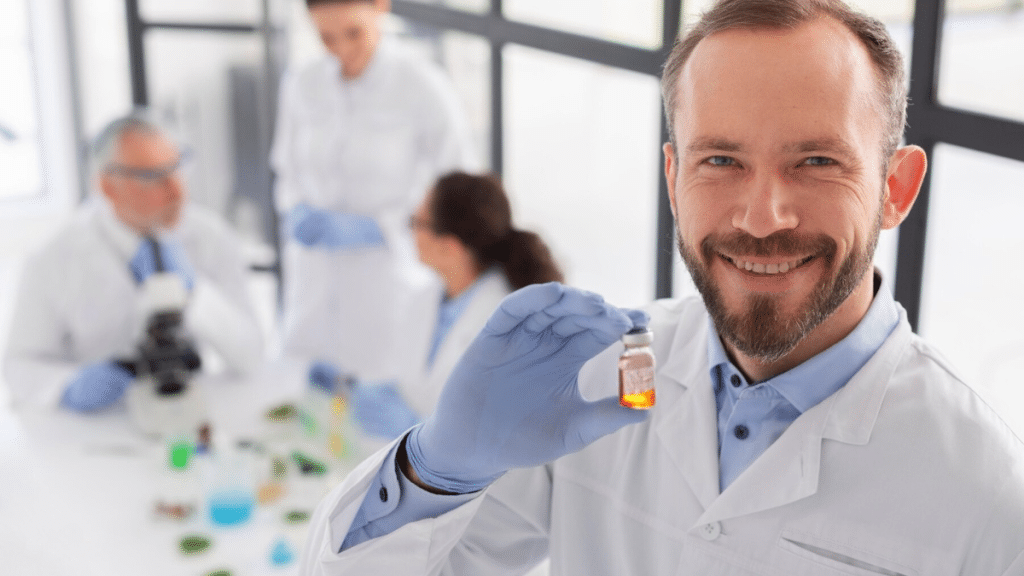Bringing a new drug to market is a long and complex process, often taking over a decade and costing billions of dollars. The drug development process in the biopharma industry is highly regulated to ensure the safety, efficacy, and quality of new treatments. Each stage of development plays a critical role in transforming a promising compound into a commercially available medication. This article explores the key stages of drug development, from discovery to post-marketing surveillance.
Discovery and Preclinical Research
Target Identification & Validation
The drug development journey begins with identifying a biological target, such as a protein or gene linked to a disease. Researchers validate these targets by studying their role in disease progression and assessing their suitability for therapeutic intervention.
Drug Discovery
Once a target is identified, scientists screen thousands of chemical compounds to find potential drug candidates. Techniques such as high-throughput screening and computational modeling help narrow down promising molecules for further evaluation.
Preclinical Studies
Before testing in humans, drug candidates undergo rigorous in vitro (lab-based) and in vivo (animal-based) testing. These studies assess the drug’s biological effects, toxicity levels, and pharmacokinetics (absorption, distribution, metabolism, and excretion). Data from these studies form the foundation of an Investigational New Drug (IND) application submitted to regulatory authorities.
Investigational New Drug (IND) Application
To advance to human trials, biopharma companies must submit an IND application to regulatory bodies such as the FDA or EMA. The IND includes:
- Preclinical study results
- Proposed clinical trial protocols
- Manufacturing details and quality controls
- Ethical considerations for human subjects
Regulatory authorities review the IND to ensure patient safety before granting approval for clinical trials to proceed.
Clinical Development (Phases 1-3)
Clinical trials are conducted in three phases, each with increasing complexity and participant numbers.
Phase 1: Safety & Dosage
In this initial phase, the drug is tested on a small group of healthy volunteers (20–100 participants). The primary goal is to assess safety, determine optimal dosage ranges, and identify potential side effects.
Phase 2: Efficacy & Side Effects
Phase 2 trials involve a larger group of patients (100–300) with the target disease. These trials evaluate the drug’s effectiveness and further assess short-term side effects. If the results are positive, the drug moves to the final clinical stage.
Phase 3: Large-Scale Trials
This pivotal stage includes thousands of patients (1,000–3,000) across multiple clinical sites. The focus is on confirming the drug’s efficacy, monitoring adverse reactions, and comparing it to existing treatments. Successful Phase 3 trials provide the evidence needed for regulatory approval.
New Drug Application (NDA) / Biologics License Application (BLA)
Once clinical trials are completed, companies submit a New Drug Application (NDA) for small-molecule drugs or a Biologics License Application (BLA) for biologic therapies. This submission includes comprehensive clinical data, proposed labeling, safety monitoring plans, and manufacturing details.
Regulatory agencies conduct thorough reviews, often involving advisory committee evaluations. If the data supports the drug’s safety and efficacy, the regulatory body grants marketing approval.
For companies navigating this complex regulatory landscape, regulatory consulting for biopharma can provide crucial guidance on compliance, submissions, and approval strategies.
Post-Marketing Surveillance (Phase 4 & Lifecycle Management)
Approval is not the final step—continuous monitoring ensures long-term safety and effectiveness.
Phase 4 Trials
Post-marketing studies track real-world drug performance, collecting data on long-term efficacy and rare adverse effects. This phase is critical for identifying potential risks that may not have emerged in earlier trials.
Pharmacovigilance
Pharmacovigilance involves the ongoing collection, analysis, and reporting of adverse drug reactions. Regulatory bodies require manufacturers to maintain robust safety reporting systems.
For example, the FDA Adverse Event Reporting System (FAERS) helps healthcare professionals and the public report and track drug-related safety concerns.
Another important regulatory framework is provided by the European Medicines Agency (EMA) Pharmacovigilance Guidelines, which outline requirements for continuous safety monitoring and adverse event reporting in the EU.
Market Expansion & Lifecycle Management
Companies often explore new applications for approved drugs, such as treating additional diseases, developing extended-release formulations, or creating combination therapies. Generic competition also influences lifecycle strategies, prompting brand-name manufacturers to innovate continuously.
Conclusion
The drug development process in the biopharma industry is a meticulous and highly regulated journey, ensuring new treatments are both safe and effective. From initial discovery to post-marketing surveillance, each stage plays a crucial role in bringing life-saving therapies to patients. With advancements in AI-driven drug discovery, precision medicine, and regulatory innovations, the future of drug development promises greater efficiency and improved patient outcomes.
